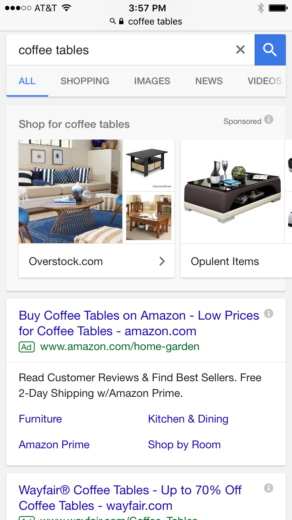What is a good click-through rate?
It’s the age-old question asked by PPC managers and clients alike. Though we can agree that higher is better, much debate remains as to what constitutes a good vs. subpar account CTR. Below, I’ll give a definitive answer, though I acknowledge that many factors are at play. Additionally, I’ll be answering this question only regarding Google Ads and Microsoft Advertising.
What Are The Factors That Influence CTR?
Network – Search Network text and Google Shopping campaigns will, for the most part, have significantly higher CTRs than Display campaigns, although display remarketing campaigns do have the potential for better CTRs than other types of Display campaigns.
Relevance – This factor combines the complete search experience from query to the landing page.
![]()
Instead of listing them individually, I include bid, keyword match type, negative keywords/audiences, quality score, and ad copy as part of the overall relevance factor. The more your keywords and ads relate to each other, the more relevant your ad will be to searchers. These items need to work together to yield a higher CTR.
Ad Rank – Even with high relevance throughout, ad position will sometimes be low. Take into consideration both Google Shopping ad units and ad extensions and the prominence of a text ad diminishes greatly. Finally, if your ad is below the fold on searchers’ browsers, you’ll potentially accrue many impressions without the ad ever being seen!
Pro Tip
Keep in mind, average position will sunset in September of 2019. Moving forward, you should use the absolute and top impression metrics to understand where your ads are positioned on the SERP. If you’d like to understand this Google update from an industry-wide perspective, check out Hanapin’s PPC Newsflash: The End of Average Position, hosted by our president, Jeff Allen.
Device – Dovetailing off ad rank, CTR will vary by device. I generally find mobile CTR to be higher than desktop and tablet. Mobile ads will also take up much of the screen, often giving users only images before having to scroll.

Data – My general rule of thumb is to have at least 100 impressions on any given campaign, ad group, keyword, or piece of ad copy before optimizing. There are always exceptions, but this threshold is a good baseline, as it gives the specific item a fair chance to succeed.
Vertical – CTRs will vary by vertical, especially when considering competition. For example, “lawyer” related terms are often extremely expensive and have vast search volume. Any of the above factors may be influenced, causing fluctuations in CTR.
Looking for additional paid advertising resources? Check out Hanapin’s resource library for free reports, white papers, and webinars.
Take me to the PPC Resource Library »
So What’s The Verdict?
Based on these factors, a good account CTR is 2%.
Others would argue that 2% is too low. I’m not advocating that once you hit 2% CTR, you’re in the clear. You should constantly strive to improve CTR in conjunction with your cost per conversion and conversion rate goals. My stance is that with all factors considered in today’s PPC world, a 2% account CTR should be deemed good.
Considerations
When I say a 2% account CTR, there will most likely be individual campaigns with better CTRs and those with worse. For example, your branded and Shopping campaigns may have CTRs much higher than 2%, while others may be below this percentage. And having a higher CTR doesn’t always mean a good campaign. It could be an indication that your account is wasting spend by advertising to people less likely to convert, i.e. less interested in your client’s products or services (but still clicking the ad, for some reason). In addition, Display Network campaigns will accrue many more impressions at lower CTRs, weighing down the overall account CTR more than search campaigns. With these considerations, my stance remains that a good account CTR is 2%.
Clients will inevitably ask how their CTR compares to others in their vertical. My answer tends to be cautious, as there are no definitive studies comparing CTR across verticals. There are studies, but none with conclusive data that I would be comfortable standing behind. It’s important to also remember that CTR benchmarks will vary by industry and combining CTR with other KPIs will give a better view of your account’s health.
Using Google’s native tools, we can glean competitive data, but these figures are only estimates. The Auction Insights report provides interesting data comparing metrics such as impression share, Position above rate, outranking share, and overlap rate to your competitors.
Pro Tip
If you’re working to create more efficient Auction Insights reporting, check out Rachael Law’s post, Using Google Data Studio for Auction Insights Reporting.
Final Thoughts
Both clients and managers will constantly question how to improve CTR. At the basic level, it all comes down to one of the factors outlined above: relevance. Create a well-structured account that easily gives searchers answers to their questions (queries).
You should always be striving to achieve a higher CTR. A 2% CTR is good, but continually improving this metric will make your account great.



